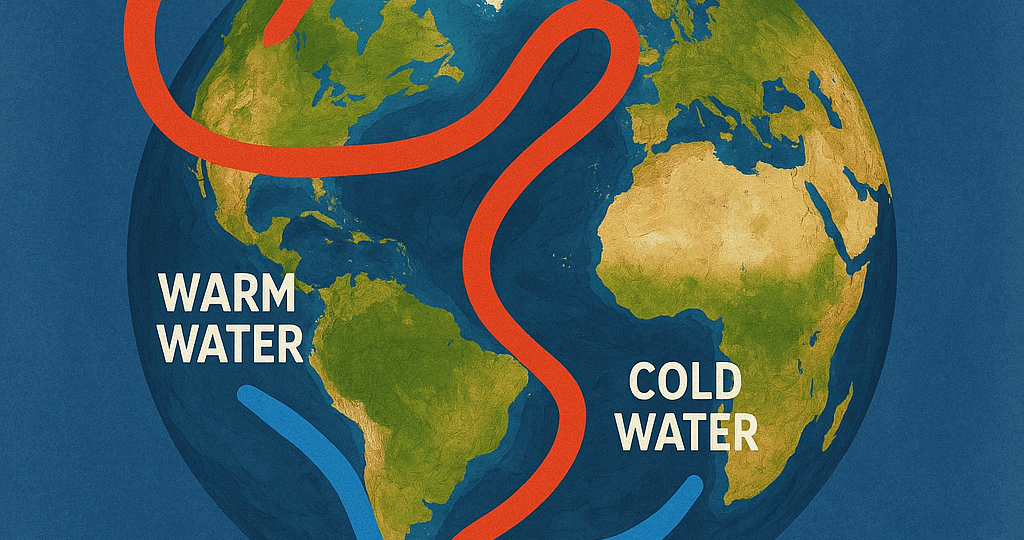
Have you ever wondered how the deep ocean moves even though there’s no wind down there? Beneath the surface of the sea, there’s a slow, powerful conveyor belt moving water all around the planet. It’s called thermohaline circulation, and it’s driven by two simple things: temperature (thermo) and salt (haline). When seawater gets really cold and salty—especially near the poles—it becomes heavier and sinks. That sunken water travels across the globe through the deep ocean. Warmer, less salty water rises elsewhere to take its place, creating a looping, worldwide current system.
This global circulation is crucial because it distributes heat around the Earth, helping regulate the climate. For example, warm water from the tropics flows northward toward Europe, keeping winters there milder than they would be otherwise. It also helps cycle oxygen and nutrients through the ocean, feeding marine life. If thermohaline circulation slows down—as scientists worry it might due to melting polar ice—it could lead to major changes in weather patterns, sea levels, and ecosystems. Think: harsher winters in Europe, droughts in Africa, or rising sea levels in the U.S.
One of the early researchers who laid the foundation for this concept was Henry Stommel, an American oceanographer. In 1958, he proposed a theoretical model showing how small differences in temperature and salinity could drive a stable, large-scale circulation system. His work combined field observations with mathematical models and helped scientists recognize just how interconnected the ocean’s movements are. Since then, research has expanded with satellite data and deep-sea sensors, confirming how vital this deep-sea conveyor belt is for Earth’s climate stability.
While it sounds like science fiction, thermohaline circulation is real, and it’s quietly operating below us every day. It shows how something as subtle as a change in ocean saltiness or temperature—caused by climate change or melting ice—can ripple across the globe. Understanding it isn’t just oceanography—it’s key to predicting the future of our planet.
RELATED POSTS
View all


